
How to Use ESP32-WROOM-32 (36 PIN): Examples, Pinouts, and Specs
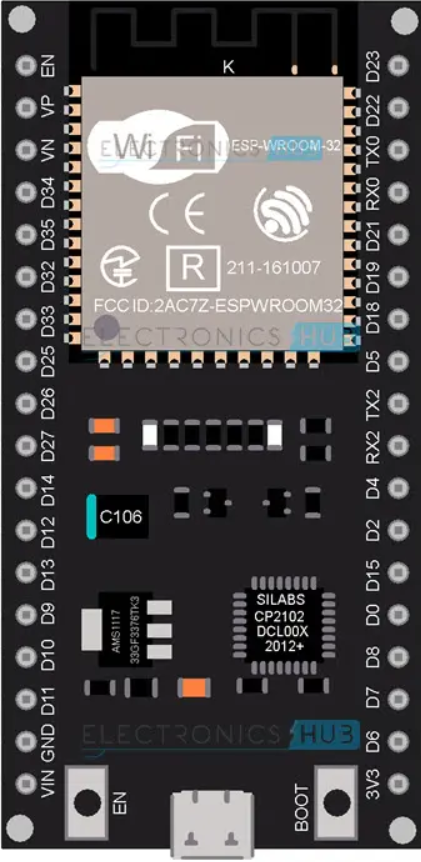
 Design with ESP32-WROOM-32 (36 PIN) in Cirkit Designer
Design with ESP32-WROOM-32 (36 PIN) in Cirkit DesignerIntroduction
The ESP32-WROOM-32 (36 PIN) is a powerful Wi-Fi and Bluetooth microcontroller module developed by Espressif. It is based on the ESP32 dual-core processor and is designed for a wide range of IoT applications. With its integrated wireless capabilities, extensive GPIO options, and robust processing power, the ESP32-WROOM-32 is ideal for projects requiring connectivity, real-time processing, and low power consumption.
Explore Projects Built with ESP32-WROOM-32 (36 PIN)
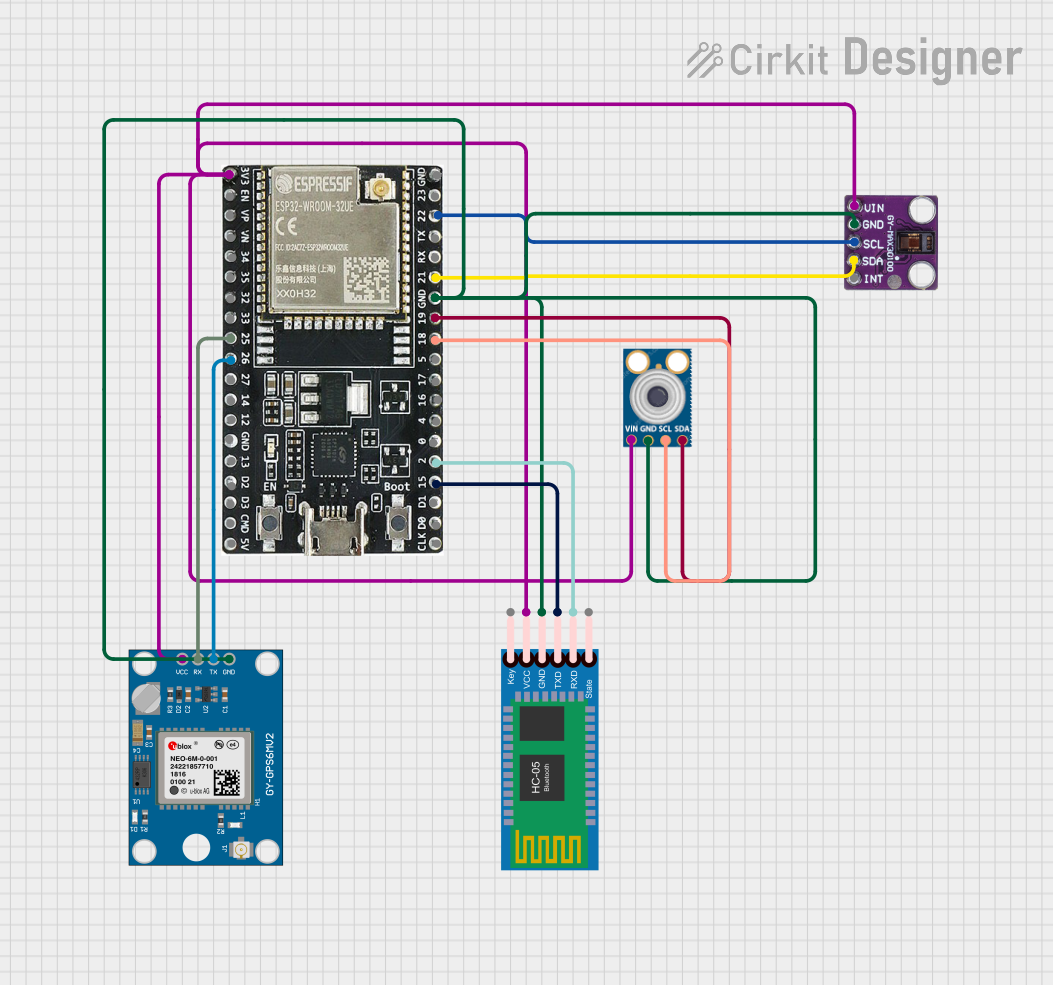
 Open Project in Cirkit Designer
Open Project in Cirkit Designer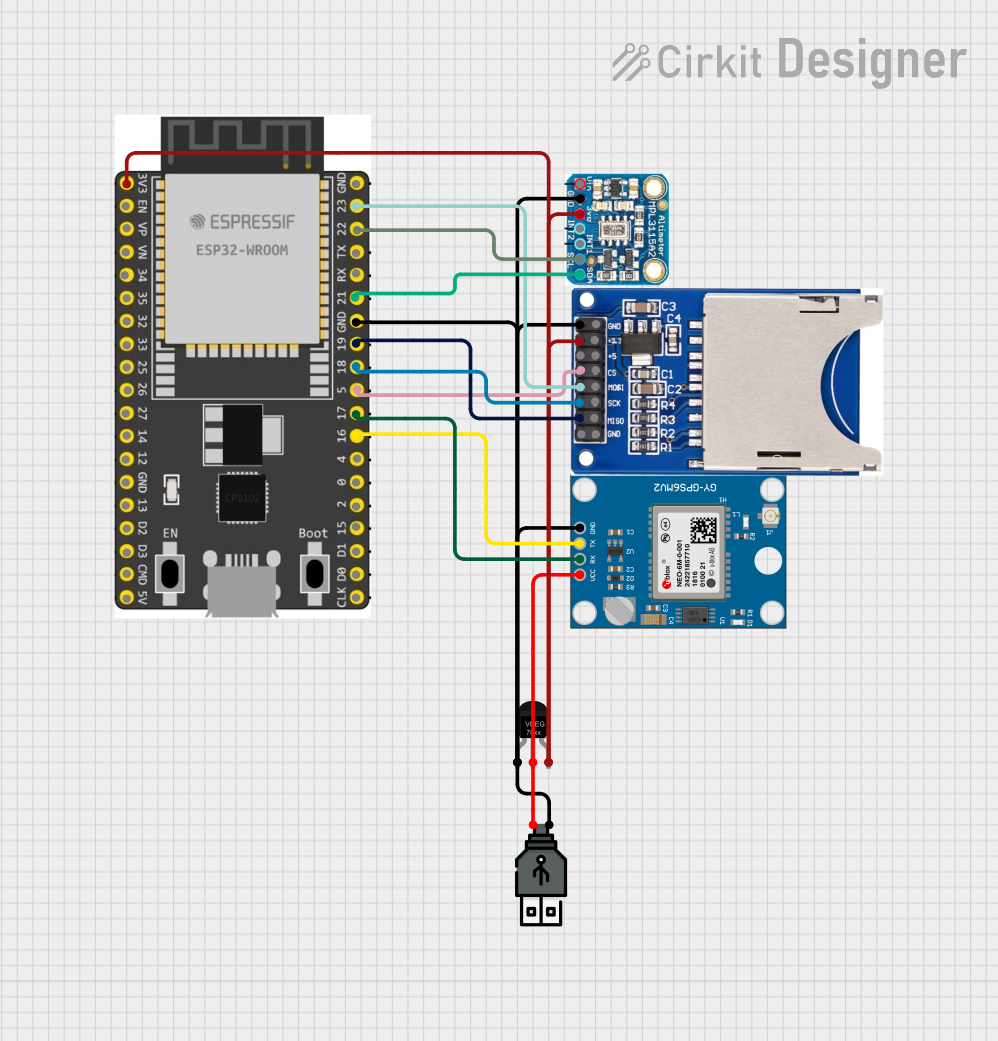
 Open Project in Cirkit Designer
Open Project in Cirkit Designer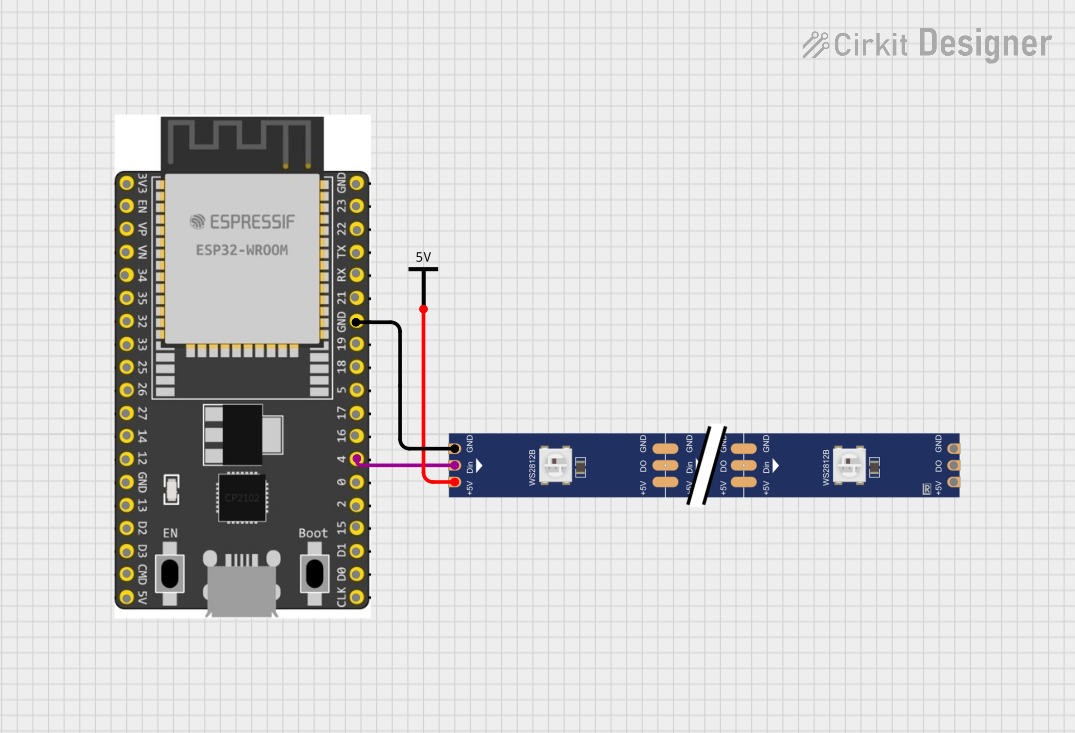
 Open Project in Cirkit Designer
Open Project in Cirkit Designer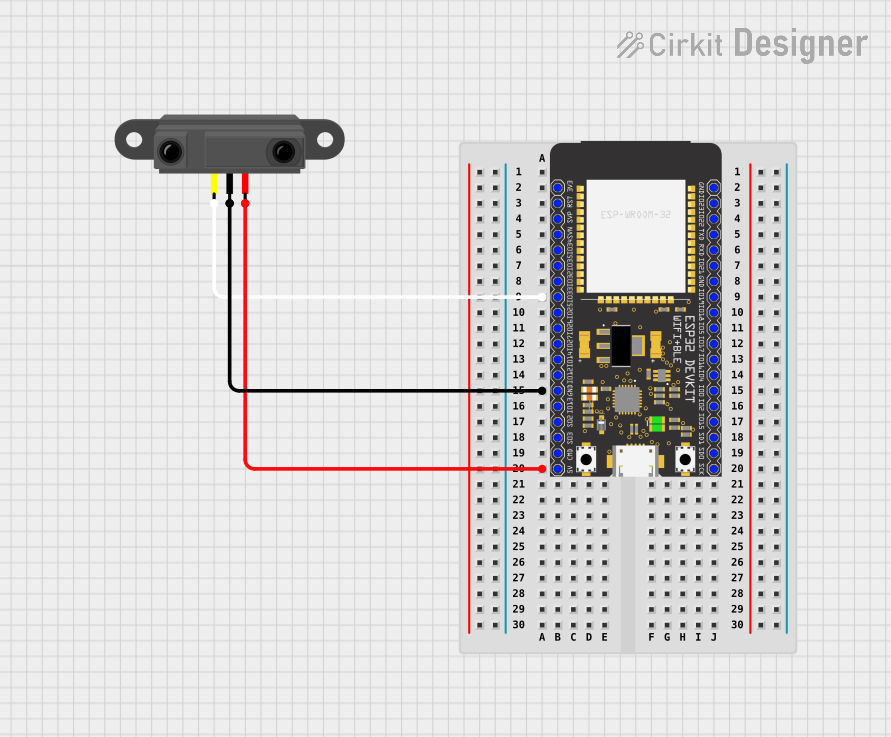
 Open Project in Cirkit Designer
Open Project in Cirkit DesignerExplore Projects Built with ESP32-WROOM-32 (36 PIN)

 Open Project in Cirkit Designer
Open Project in Cirkit Designer
 Open Project in Cirkit Designer
Open Project in Cirkit Designer
 Open Project in Cirkit Designer
Open Project in Cirkit Designer
 Open Project in Cirkit Designer
Open Project in Cirkit DesignerCommon Applications and Use Cases
- IoT devices and smart home automation
- Wireless sensor networks
- Wearable electronics
- Industrial automation
- Robotics and drones
- Prototyping and development of connected devices
Technical Specifications
Key Technical Details
- Manufacturer: Espressif
- Part ID: DEVKIT V1
- Processor: Dual-core Xtensa® 32-bit LX6 CPU
- Clock Speed: Up to 240 MHz
- Wireless Connectivity: Wi-Fi 802.11 b/g/n and Bluetooth v4.2 (Classic + BLE)
- Flash Memory: 4 MB (default, expandable)
- SRAM: 520 KB
- Operating Voltage: 3.3V
- Input Voltage Range: 5V (via USB) or 7-12V (via VIN pin)
- GPIO Pins: 34 (multipurpose, including ADC, DAC, PWM, I2C, SPI, UART)
- ADC Channels: 18 (12-bit resolution)
- DAC Channels: 2
- PWM Channels: 16
- Operating Temperature: -40°C to +85°C
- Dimensions: 25.5 mm x 51 mm
Pin Configuration and Descriptions
The ESP32-WROOM-32 (36 PIN) module features a total of 36 pins. Below is the pinout and description:
| Pin Number | Pin Name | Function |
|---|---|---|
| 1 | EN | Enable pin. Active high to enable the module. |
| 2 | IO0 | GPIO0. Used for boot mode selection during programming. |
| 3 | IO1 (TX0) | GPIO1. UART0 TX pin. |
| 4 | IO3 (RX0) | GPIO3. UART0 RX pin. |
| 5 | IO4 | GPIO4. General-purpose I/O. |
| 6 | IO5 | GPIO5. General-purpose I/O. |
| 7 | IO12 | GPIO12. Can be used as ADC, touch, or general-purpose I/O. |
| 8 | IO13 | GPIO13. Can be used as ADC, touch, or general-purpose I/O. |
| 9 | IO14 | GPIO14. Can be used as ADC, touch, or general-purpose I/O. |
| 10 | IO15 | GPIO15. Can be used as ADC, touch, or general-purpose I/O. |
| 11 | IO16 | GPIO16. General-purpose I/O. |
| 12 | IO17 | GPIO17. General-purpose I/O. |
| 13 | IO18 | GPIO18. SPI clock (SCK) or general-purpose I/O. |
| 14 | IO19 | GPIO19. SPI MISO or general-purpose I/O. |
| 15 | IO21 | GPIO21. I2C SDA or general-purpose I/O. |
| 16 | IO22 | GPIO22. I2C SCL or general-purpose I/O. |
| 17 | IO23 | GPIO23. SPI MOSI or general-purpose I/O. |
| 18 | IO25 | GPIO25. DAC1 or general-purpose I/O. |
| 19 | IO26 | GPIO26. DAC2 or general-purpose I/O. |
| 20 | IO27 | GPIO27. General-purpose I/O. |
| 21 | IO32 | GPIO32. ADC or general-purpose I/O. |
| 22 | IO33 | GPIO33. ADC or general-purpose I/O. |
| 23 | IO34 | GPIO34. ADC input only. |
| 24 | IO35 | GPIO35. ADC input only. |
| 25 | GND | Ground. |
| 26 | 3V3 | 3.3V power output. |
| 27 | VIN | Input voltage (7-12V). |
| 28 | TX2 | UART2 TX pin. |
| 29 | RX2 | UART2 RX pin. |
| 30 | TX1 | UART1 TX pin. |
| 31 | RX1 | UART1 RX pin. |
| 32 | BOOT | Boot mode selection pin. |
| 33 | RST | Reset pin. Active low to reset the module. |
| 34 | IO36 | GPIO36. ADC input only. |
| 35 | IO39 | GPIO39. ADC input only. |
| 36 | NC | Not connected. |
Usage Instructions
How to Use the ESP32-WROOM-32 in a Circuit
Powering the Module:
- Use the VIN pin to supply 7-12V or connect a 5V USB power source.
- Ensure the 3.3V pin is not overloaded, as it is for low-power peripherals only.
Programming the Module:
- Connect the ESP32 to your computer via a USB cable.
- Install the necessary drivers (e.g., CP2102 or CH340, depending on your board).
- Use the Arduino IDE or Espressif's ESP-IDF for programming.
Connecting Peripherals:
- Use GPIO pins for connecting sensors, actuators, or other peripherals.
- Configure the pins in your code as input, output, or alternate functions (e.g., ADC, PWM).
Flashing Code:
- Hold the BOOT button while pressing the EN button to enter programming mode.
- Upload your code using the Arduino IDE or other compatible tools.
Important Considerations and Best Practices
- Avoid applying more than 3.3V to GPIO pins to prevent damage.
- Use level shifters when interfacing with 5V devices.
- Ensure proper grounding to avoid noise and instability in the circuit.
- Use decoupling capacitors near the power pins for stable operation.
Example Code for Arduino UNO
Below is an example of how to blink an LED connected to GPIO2:
// Define the GPIO pin for the LED
#define LED_PIN 2
void setup() {
// Set the LED pin as an output
pinMode(LED_PIN, OUTPUT);
}
void loop() {
// Turn the LED on
digitalWrite(LED_PIN, HIGH);
delay(1000); // Wait for 1 second
// Turn the LED off
digitalWrite(LED_PIN, LOW);
delay(1000); // Wait for 1 second
}
Troubleshooting and FAQs
Common Issues and Solutions
ESP32 Not Detected by Computer:
- Ensure the correct USB drivers (CP2102 or CH340) are installed.
- Try a different USB cable or port.
Code Upload Fails:
- Check the COM port in the Arduino IDE.
- Hold the BOOT button while pressing the EN button during upload.
Wi-Fi Connection Issues:
- Verify the SSID and password in your code.
- Ensure the router is within range and supports 2.4 GHz Wi-Fi.
GPIO Pin Not Working:
- Check if the pin is configured correctly in the code.
- Avoid using reserved pins (e.g., GPIO6-GPIO11 for flash memory).
FAQs
Q: Can the ESP32-WROOM-32 operate on battery power?
- A: Yes, it can be powered using a LiPo battery connected to the VIN pin.
Q: How do I reset the ESP32?
- A: Press the RST button or pull the RST pin low.
Q: Can I use the ESP32 with 5V logic?
- A: No, the ESP32 operates on 3.3V logic. Use level shifters for 5V devices.